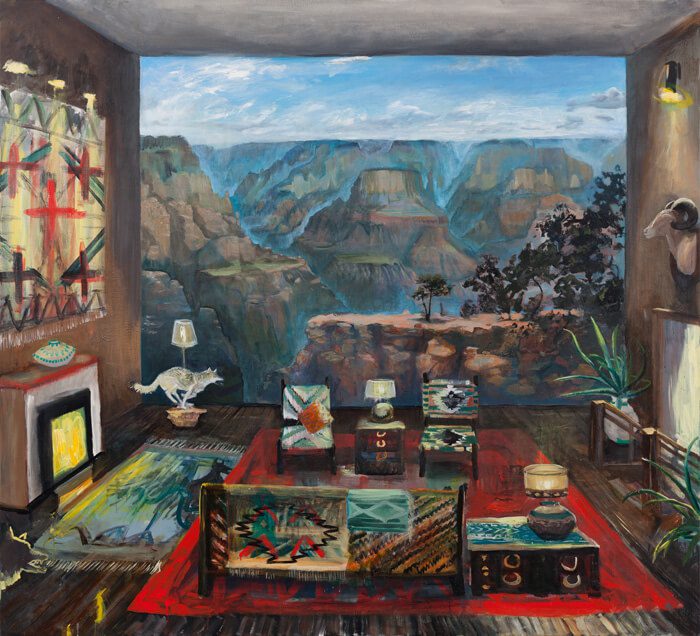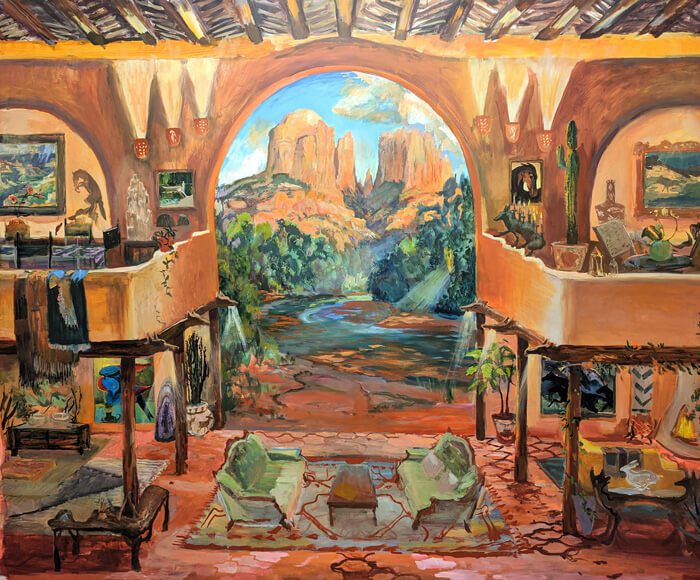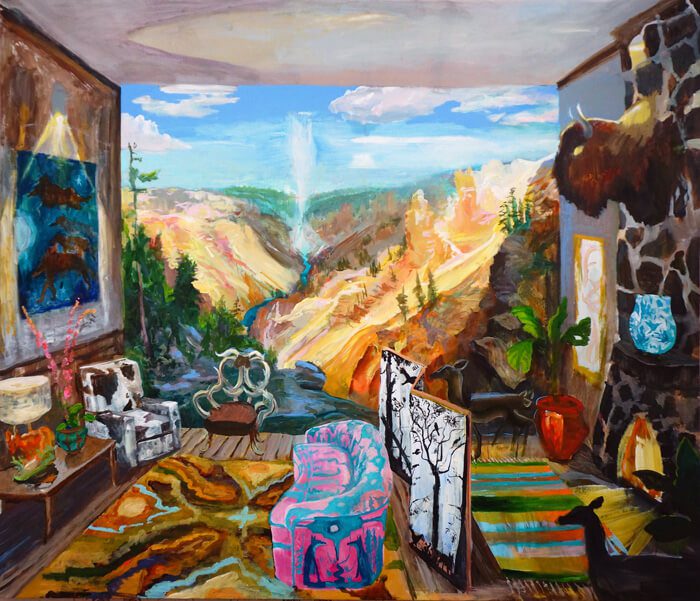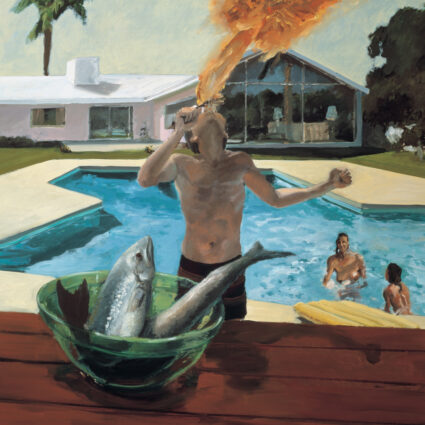Taos artist Johnny DeFeo’s recent body of work, Department of the Interior, features renderings of Southwestern interior spaces that illustrate the luxury of access to natural scenery.
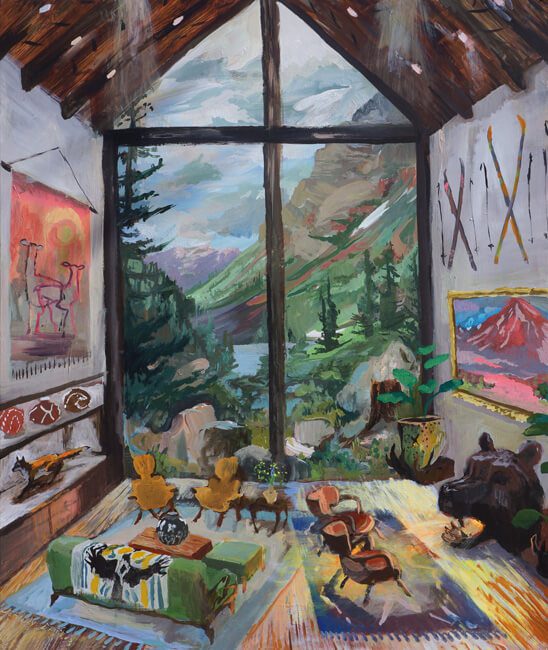
Johnny DeFeo’s landscape-esque paintings derive from the natural beauty of the Southwest as well as its infamous kitsch. His recent body of work, Department of the Interior, features colorful, fun, and painterly renderings of grand Southwestern interior spaces. These spaces, all too familiar to those that live in the region and even to those who might have taken a road trip to the Grand Canyon at some point in their lives, appear absurd through DeFeo’s eyes. This absurdness comes not from the scenes themselves, which are representations of actual spaces, but from their allusions to the rampant commodification of nature associated with the American West.
Many paintings from the series feature large hotel lobbies or sitting rooms, each designed around a grand scenic view or larger-than-life mural of a scenic view. Although it is not always clear if a window or mural is depicted, the connotation of ownership is continuous. Department of the Interior highlights the distinctly American consumeristic desire to own property, land, and the “best view.” DeFeo’s paintings call back to the 19th-century American landscape painting tradition (think Frederic Edwin Church and Thomas Cole) that promoted westward expansion and the illusion of uninhabited and uncultivated land. These historic paintings paved the way for ideologies such as “manifest destiny” and the rationalization of killing and removing Indigenous peoples from their ancestral lands.
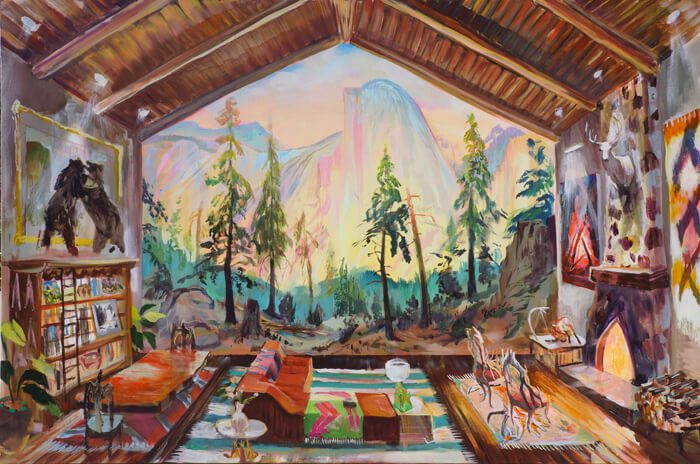
Today, the United States Department of the Interior is responsible for managing public lands and administering public programs related to Indigenous populations. When the department was founded just after the Mexican-American War in 1849, it was intended to oversee the United States’ newly acquired lands that stretched from coast to coast, and its indigenous inhabitants. This period of U.S. history is notorious for the violence inflicted on Indigenous populations and is inextricably linked to the public lands and parks that many Americans enjoy and covet today. DeFeo’s name for this series cleverly refers to this complicated and mostly misunderstood history of a U.S. department and also, interior design.
There are no figures present in DeFeo’s paintings, much like images in design magazines. All of the chairs are empty, yet the lights are on and fires burn warmly. The viewer is invited to enter the scene and by proxy, a consumer fantasy. These paintings illustrate the luxury of access to natural scenery and, like all luxury goods, that comes at a cost.
Taos, NM | johndefeo.com | ig: @johnnycakesdefeo
